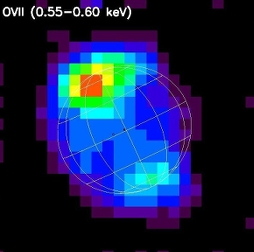 HEAPOW: Dissecting Jupiter's Aurorae (2015 Jun 22)
HEAPOW: Dissecting Jupiter's Aurorae (2015 Jun 22)
Magnetic fields are produced by motions of charged particles. While magnetic fields are common in the Universe, in the inner solar system, magnetic fields are actually rather rare. Earth's magnetic field is by far the strongest, Mercury's is very weak, and Venus and Mars have essentially no magnetic field. Magnetic fields are useful for helping planet-dwellers find their way, but they play an important role in planetary protection too, since a planet's magnetic field helps shield the planet from the harsh, high energy solar wind and the sun's coronal mass ejections (themselves driven by the sun's own magnetic field). In the outer solar system, all the gas giant planets have strong magnetic fields, with Jupiter, the king of planets, having the strongest planetary magnetic field. The inconstant struggle between the solar wind and Jovian magnetic field produces strong high energy X-ray radiation. X-ray studies are therefore important to determine the different physical mechanisms occuring in the Jovian magnetic field and helps us understand how a star's wind affects its planets. The image above shows X-ray emission from highly ionized oxygen (O), iron (Fe), and magnesium (Mg) atoms surrounding Jupiter, as observed by the XMM-Newton X-ray observatory. As shown in the images, emission from oxygen atoms are brightest near the Jovian magnetic poles, where highly-ionized oxygen atoms exchange or capture electrons which produce strong oxygen emission lines in the X-ray region. In contrast, emission from iron atoms is mostly distributed at lower Jovian latitudes; this emission is probably dominated by the scattering of solar X-rays by the Jovian atmosphere. These XMM-Newton observations also found evidence of previously unknown, very high energy emission, possibly correlated to intense solar activity.
ESA: XMM-Newton: Spectral Maps of Jupiter
| << Previous HEAPOW | High Energy Astrophysics Picture of the Week | Next HEAPOW >> |